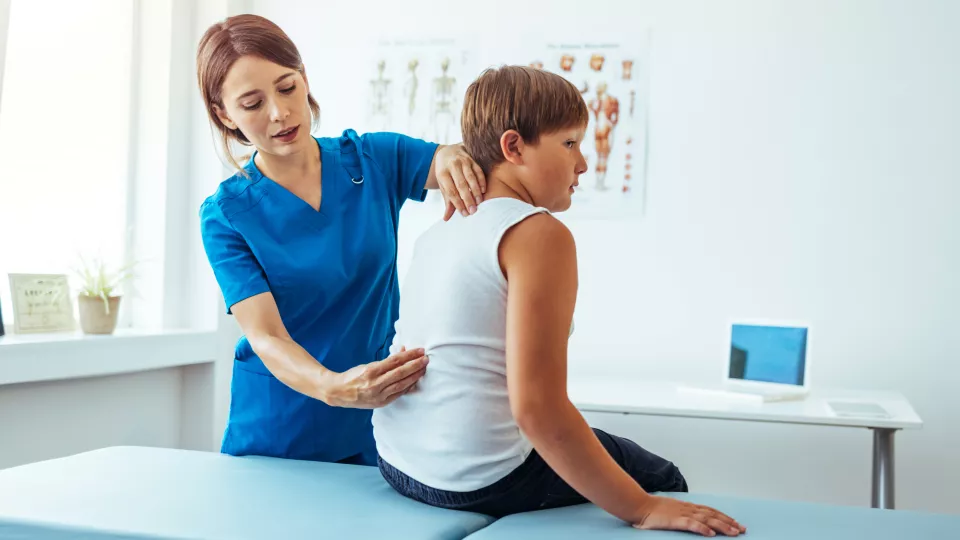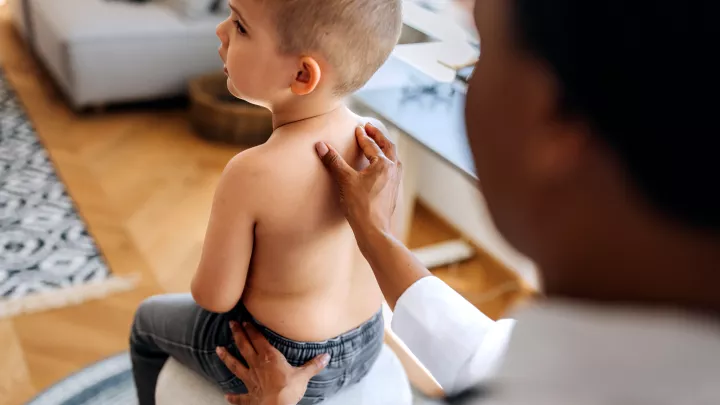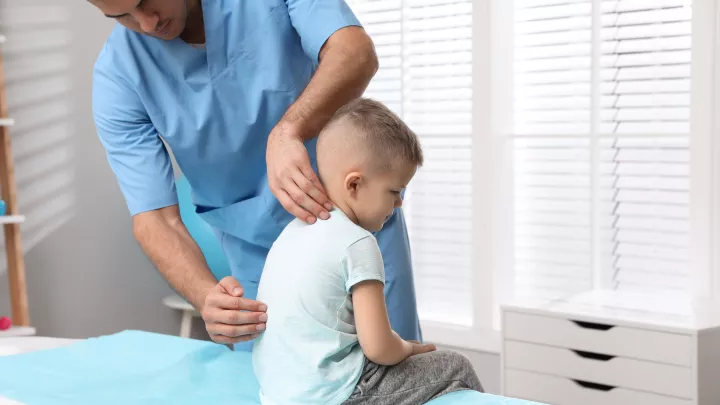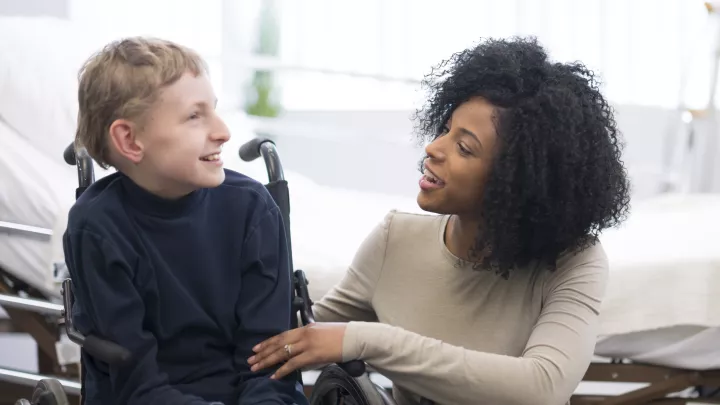
What Happens to Scoliosis After a Tether Breaks?
A broken tether is a common complication after vertebral body tethering for scoliosis, occurring in up to 50% of cases. But what happens to a spinal curve after a tether breaks? And how often do patients need additional surgery?

A new international study of patients is shedding light on the answers to these important questions. Researchers found that half of patients had curve progression after their tether broke—with 25% seeing a worsening of more than 10 degrees.
Tyler Tetreault, MD, a pediatric spine surgeon in the Jackie and Gene Autry Orthopedic Center at Children’s Hospital Los Angeles, led the study and presented the results April 12 at the 31st International Meeting on Advanced Spine Techniques (IMAST) in San Diego.
“In terms of the data we have on tethering so far, this adds another argument for why surgeons may want to pause before offering this procedure to patients,” says Dr. Tetreault. “It may not have the durability of results that we’re looking for.”
Key findings
Vertebral body tethering (VBT) was approved by the Food and Drug Administration in 2019 as an alternative to spinal fusion for adolescent idiopathic scoliosis. The procedure uses a system of metal anchors and a flexible cord, called a tether, to straighten the spine.
But that tether can break over time. To better understand the impact of that event, Dr. Tetreault examined data from the Pediatric Spine Study Group, an international consortium of pediatric research centers.
The study included 84 patients who experienced a broken tether after vertebral body tethering and who had at least two years of follow-up. The team found that:
- The mean time of a tether break was 2.5 years after surgery.
- By two years after a break, 50% of patients had seen their curves progress at least 5 degrees, with 25% of curves increasing more than 10 degrees.
- Rates of curve progression beyond 5 degrees were similar between skeletally immature and mature patients.
- Nearly 15% of patients underwent revision surgery, with nearly half receiving a new tether and the rest undergoing spinal fusion.
“We also found that, two years after a tether break, roughly two-thirds of patients had curves greater than 35 degrees,” Dr. Tetreault notes. “That is not considered a good result.”
In contrast, curves after a spinal fusion surgery are typically less than 20 degrees and are often as low as 15 or 16 degrees.
Raising questions about VBT
The findings follow a 2022 study led by Children’s Hospital Los Angeles that also raised questions about VBT. That research found that 92% of patients who underwent tethering did not have additional curve correction after their surgery.
These questions are one reason why CHLA does not offer VBT to patients. “The risk profile of tethering does not make it worthwhile to offer it, especially since our success rates for spinal fusion surgery are so high,” Dr. Tetreault explains.
Still, more research is needed. “Some evidence suggests that curve progression may stabilize two years after a break, but it’s too soon to know,” he adds. “We need to see how curves behave five and 10 years after a tether break. That will give us a better picture of the long-term impacts of this complication.”
Study authors were Tyler A. Tetreault, MD; Tiffany N. Phan, BA; Tishya A.L. Wren, PhD; Michael J. Heffernan, MD; Michelle C. Welborn, MD; John Smith, MD; Ron El-Hawary, MD; Kenneth Cheung, MD; Kenneth D. Illingworth, MD; David L. Skaggs, MD; Pediatric Spine Study Group, and Lindsay M. Andras, MD.


